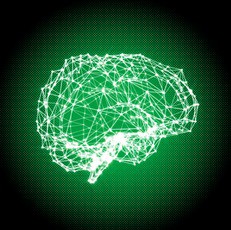VIRTUAL EMDR BLOG
The Science Behind EMDR
06 May 2016
![]() Tag: PTSD
Tag: PTSD

|
Mental health problems are nothing more than demons trapped inside the human head. The best treatment is to let the demons out, literally, by drilling a hole through the skull and giving the demons a way to escape. At least this is what doctors once thought. |
Fast forward to the Information Age. For the first time in history,science has access to technologies that can peer into the functioning of the human brain on the tiniest of levels.Using powerful new imaging techniques such as SPECT
imaging scans and the fMRI (functional magnetic resonance
imaging) we have a newer and deeper understanding of our internal computer than ever before.
But as powerful as all this new brain scanning technology may be, the truth is that science is still trying to understand the mysteries of the human mind.
And while dozens of research studies prove that EMDR (eye movement desensitization and reprocessing) therapy is an effective form of mental health treatment, researchers are still trying to how it affects the human brain.
They know it works, but why?
EMDR treatments work by helping users to reprocess thoughts and memories that may have been incompletely processed because of strong negative emotions or dissociation during a traumatic episode.
By using EMDR to change the pathways in the brain, patients can turn unhealthy and self-destructive thoughts into healthy and positive beliefs and behaviors that will better their lives.
Using an analogy to the human body, it is well-documented that when experiencing great danger or stress, the human body shuts down non-essential functions in order to allow blood to flow to the essential functions to help ensure the person's survival.
Similarly, during periods of trauma and highly negative events, the human mind may shut down or shut off certain emotions, sensations and other thoughts in order to get back.
For example, a rape victim may only focus on doing what is necessary for her to survive the immediate trauma. Other thoughts, emotions and sensations are improperly stored in her mind without the necessary and normal processing. In particular, she may not have the opportunity to create the right associations for these memories, such as "I am not responsible for the rape" or "I am not a victim."
EMDR treatments, like those offered by the Virtual EMDR System, afford the opportunity for patients to revisit and reprocess these incompletely-processed memories. This is why "reprocessing" is such an important part of EMDR. Patients can turn unhealthy and self-destructive thoughts into healthy and positive beliefs and behaviors that better serve their lives.
As one of the most researched psychotherapeutic treatments, EMDR has been studied among many groups of patients, including military veterans and victims of sexual assault. In some studies, more than 70% of subjects no longer
demonstrated their symptoms after as few as three sessions of EMDR. In a study of depressed people, EMDR therapy was found to be more effective than Prozac for long-term treatment. Clinical studies have even shown that EMDR helps patients heal or change problem behaviors in a fraction of the time required by other forms of therapy.
The United States Department of Defense in their mental health treatment guidelines for military veterans said that, “EMDR was placed in the “A” category as “strongly recommended” for the treatment of trauma.”
SO HOW DOES EMDR WORK?
Given the relatively young history of EMDR, there is not yet one consistent explanation for why the process works. Instead there are multiple theories that the scientific community commonly accepts as to why EMDR is such an effective form of therapy.
One of the most popular theories is that EMDR is linked to the Rapid Eye Movement (REM) that happens during sleep. REM helps the mind to file away memories during sleep, such that critical parts of the memory are processed and adequately stored in the appropriate areas of the brain.
EMDR therapy works to bring up REM-type cues, so that memories can be retrieved and processed, before being re-stored in the mind but with the desired associations.
The science behind EMDR is still evolving. However, even with our limited understanding today, EMDR is already well-established as an effective treatment approach for treating emotional and mental disorders, such as PTSD.







I am disabled American Veteran and I found this site very interesting. I thought it was free for me but I’m not sure, can I get more info.
O need to hear more of this
Hi I don't spouse someone with eperilsepy can use this.
I have subscribed to your program. I started with a therapist doing the EMDR treatment. I am truly amazed at how well EMDR works. I have been in and out of talk therapy for years. For me talk therapy never worked. I was recently diagnosed with CPTSD. My struggles in life finally make sense. I signed up for your program as an add on to my therapy. I have a suggestion. I use the hand tappers with my therapist. For me these really help. I have ordered a set to use with your program. Hopefully I can sync them with your tools. You may want to offer these as an extra tool. Thank you for creating such a helpful set of tools.